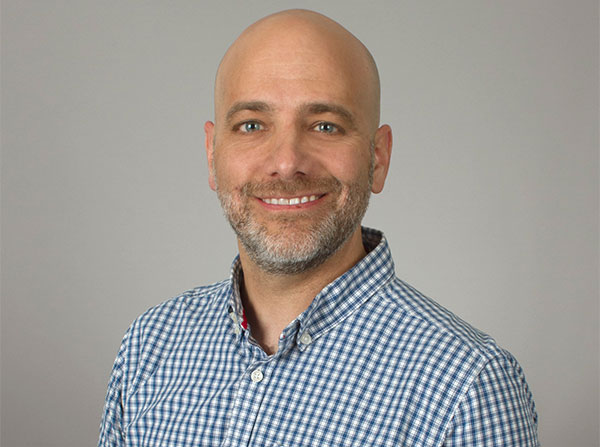
David V. Conti, PhD
In the decades-long search for answers, cancer researchers have been taking small steps toward solving some of the puzzles that perplex modern physicians.
Why do some patients respond better to some medicines, while others require a different course of treatment? What age should be recommended for the public to get screened for certain cancers?
While many of the answers are still years away, scientists have known genetics play a part in developing cancer. Now, a team of researchers at USC Norris Comprehensive Cancer Center has reinforced that knowledge, identifying six
new susceptibility loci as part of a genome-wide association study (GWAS) of colorectal cancer.
The study, dubbed the CORECT project, combined data from four research consortia that have looked at the genetic
information of more than 52,000 people with colorectal cancer: the Colorectal Cancer Transdisciplinary Study (CORECT), the Colon Cancer Family Registry (CFR), the Molecular Epidemiology of Colorectal Cancer Study (MECC), the Asian Colorectal Cancer Consortium (ACCC) and the Genetics and Epidemiology of Colorectal Cancer Consortium (GECCO).
The team, which was spread across five continents, found six regions of the genetic code that are linked to a higher risk of developing the cancer. Phase I of the work was published in the July 7 issue of Nature Communications, a peer-reviewed open access scientific journal, and included the work of David V. Conti, PhD, the study’s lead biostatistician and a professor in the biostatistics division at the Keck School of Medicine of USC.
“The CORECT consortium makes substantial contributions to our understanding of the genetics of colon cancer,” says Stephen B. Gruber, MD, PhD, MPH, director of the USC Norris Comprehensive Cancer Center. “The overall goal of the CORECT study is to better understand both the genetic and environmental contributions to colon cancer so that we can measurably reduce the burden of disease on the population.”
The study is one of two housed at USC as part of an effort by the National Cancer Institute to look at the human genome and try to determine what causes certain cancers.
The Institute picked five cancers to study: breast, lung, prostate, colorectal and ovarian cancer, and USC is home to the prostate and colorectal studies.
“The current investigation will be the largest GWAS for colorectal cancer,” Conti says. “Phase I of the project included over 18,000 cases and 19,000 controls. Phase II consists of an additional 26,000 cases and 18,000 controls. Taken in its entirety, this project is reflective of the need for numerous samples to be used in the analysis for sufficient statistical power and the requirement of massive collaborations not only in terms of studies, but also expertise. Individuals involved in this endeavor include clinicians, epidemiologists, bioinformaticists, biostatisticians and cancer biologists.”
The scope of the study, which included tens of thousands of patients of European or Asian heritage, is what sets this study apart from previous findings and sets the researchers on the path for breakthroughs in the second phase of the study and beyond.
“Notably, the Phase II samples represent multiple ethnic groups and include individuals primarily of European, Asian and Hispanic origins,” Conti says. “We are currently performing an analysis that combines all the data from Phase I and II and we hope to identify many new loci — preliminary investigation suggests that we may identify at least 10 new loci.”
The first phase of the study investigated the top 200 risk areas of the genetic code that had been found during the European discovery phase and found the “six new susceptibility loci reaching a genome-wide threshold of P<5.0E – 08.”
“This study identified opportunities to explore new biologic mechanisms for predisposition to CRC and the potential for translation into improved risk prediction for populations of diverse ancestral heritage,” according to the published study.
That means that, instead of relying on average risk and recommendations such as screening for colon cancer beginning at age 50, doctors eventually will be able to prescribe specific courses of medicine to more effectively treat patients with colorectal cancer, or for patients with a higher genetic risk factor, begin screening at an earlier age. Though the work will not be seen immediately in practice, this work will help future researchers in the overall quest to conquer cancer.
“Further identification of susceptibility loci will provide additional understanding of the etiologic mechanism leading to colorectal cancer and will inform future efforts to use this information for personalized medicine and population screening,” Conti says. “While the current analysis is challenging in terms of the nuances of the statistical analysis, I am particularly interested in these future areas of investigation and how novel statistical methods, integrated with biological knowledge, can help forge advances.”
By Melissa Masatani